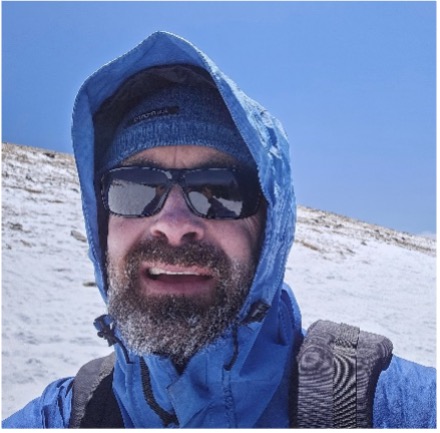Expert Spotlight: Ellis Margolis, Dendrochronologist
By Casey
Trees keep remarkable journals; Noting growth, recording the weather and climate, and keeping track of big events of each year. These notes, reflected in the rings of the tree’s trunk, are especially useful to track the fire history during a tree’s lifetime. Dendrochronology is the study of dating tree rings and the information they contain, including their experience with wildfire. While historical records of forest conditions and wildfire regimes prior to 1900 are limited, trees can provide valuable insights through their growth patterns and fire scars.
Ellis Margolis, a researcher working with the United States Geological Survey (USGS) in New Mexico has studied the fire history recorded in tree rings in the southwestern United States. Fire-scarred trees, stumps, and logs are still present in most dry forests across the region, reminders that low-severity fire used to be abundant in many ecosystems of the region. Some of these tree-ring records date back three to seven hundred years and can be used to reconstruct the ecological history of the area. Tree rings can record the year, season, severity, and size of past fires.
Dr. Margolis’s research indicates that recurring, low-severity fires in dry conifer forests burned every 10 – 30 years, on average. These fires helped clear smaller vegetation and woody debris in the area but only left burn scars on a handful of the larger trees. Despite the historical evidence of frequent fires across large areas and different forest types, fire was excluded from most of the southwest during the 20th century, so there are some areas that have not seen a fire in the last 140 years, as Dr. Margolis put it, ‘we got really good at suppressing fire.’
Dr. Margolis tells us that many of the western dry conifer forests that he has studied have seen an increase in tree density in the last century, sometimes tenfold. Due to the suppression of fire, the smaller trees that would have been weeded out by low-intensity fires are now accumulated as fuels. Dr. Margolis describes this fuel build-up as ‘a bomb of energy sitting on the landscape,’ and recent high severity wildfires burning hundreds of thousands of acres have exemplified this catastrophic scale and destruction.
Despite this, Dr. Margolis is optimistic for the future and is especially excited about how tree ring science can inform land management today. He points to work being done in the Santa Fe Watershed, New Mexico, where forest health is critical for the region’s water supply. Informed by Dr. Margolis’s tree ring science, incredible efforts have restored healthy and resilient landscape conditions and reintroduced frequent low-severity fire.
